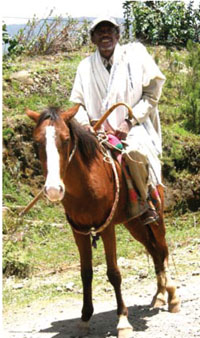Self-Assessment Questions (SAQs) for Study Session 7
Now that you have completed this session, you can assess how well you have achieved its Learning Outcomes by answering these questions. Write your answers in your Study Diary and discuss them with your Tutor at the next Study Support Meeting. You can check your answers with the Notes on the Self-Assessment Questions at the end of this Module.
SAQ 7.1 (tests Learning Outcomes 7.1, 7.2, 7.3, 7.4 and 7.5)
Which of the following statements is false? In each case, say what is incorrect.
A If a wound is bleeding externally, you apply pressure to it, elevate the bleeding part and bandage it tightly enough to stop the bleeding.
B A person who has internal bleeding will have a slow pulse and rapidly rising blood pressure.
C Pain in the abdomen and rigid abdominal muscles are signs of a possible internal injury.
D Bleeding from the nose, ears or scalp and confusion in the patient’s speech or behaviour are signs of possible head injury.
E Swelling and internal bleeding are signs of an open fracture.
F A person with a first degree burn is at risk of dying from dehydration and infection.
Answer
A is true. If a wound is bleeding externally, you apply pressure to it, elevate the bleeding part and bandage it tightly enough to stop the bleeding.
B is false. A person who has internal bleeding will have a rapid pulse and falling blood pressure.
C is true. Pain in the abdomen and rigid abdominal muscles are signs of a possible internal injury.
D is true. Bleeding from the nose, ears or scalp and confusion in the patient’s speech or behaviour are signs of possible head injury.
E is false. An open fracture means the broken bone is sticking out through the skin at the fracture site. There is also likely to be swelling and internal bleeding, but this also occurs in closed fractures.
F is false. A person with a third degree burn is at risk of dying from dehydration and infection if the burned area is extensive. First degree burns are superficial and heal within a few days.
SAQ 7.2 (tests Learning Outcomes 7.1, 7.3 and 7.4)
- a.How would you immobilise (i) a fractured limb and (ii) a neck or spinal injury?
- b.What is the purpose of immobilisation and what outcomes could it prevent?
Answer
- a.Fracture immobilisation is done by keeping the injured limb straight using a rigid material called a splint, which is bandaged to the broken limb to keep it still. The splint should be long enough to immobilise the whole of the limb above and below the fracture. Immobilisation of spinal injuries is done by applying sand-bags or pillows on each side and at the back of the neck to stop the head and neck from moving during transportation to a health facility.
- b.The purpose of immobilising a fracture or spinal injury is to prevent further injury or damage to the patient, which could occur if the broken parts are moved during transport to a health facility. In the case of a fracture, further damage to the broken limb could lead to loss of the limb or difficulty in using the limb. In the case of spinal injury, further damage could cause death or permanent disability, e.g. paralysis.
SAQ 7.3 (tests Learning Outcome 7.5)
What are the steps of emergency first aid care for a severe burn?
Answer
The first thing you should do is to cool the burn by flushing it with cold water and if possible immerse the burned part in cold water. Gently remove any clothing that is touching the burned area. Cover the wound with a sterile dressing or (if one is not available) a very clean cloth. If the burn is extensive or deep, transport the person to a health centre or hospital for specialist care.
Read Case Study 7.1 about Mr. Samuel and respond to the question that follows it.
Case Study 7.1 Mr. Samuel has a horse-riding accident
Mr Samuel is a 54-year-old farmer who was heading home from his farm (Figure 7.9). He was riding fast when his horse stumbled and fell into a ditch, throwing Mr Samuel against a rock on the ground. He was found by some villagers, who called you to see him. When you reach the place, you see that he is lying on the ground and he seems unable to get up. You can’t see any blood on his clothes.

SAQ 7.4 (tests Learning Outcomes 7.1, 7.2, 7.3 and 7.4)
What possible injuries could Mr Samuel have suffered?
Answer
Mr Samuel seems unable to get up so he may have fractured a limb, or suffered head and spinal injuries; he may also have internal bleeding. In other words, he could have multiple injuries which happened all at the same time when he fell from the horse and hit the rock.
Summary of Study Session 7
